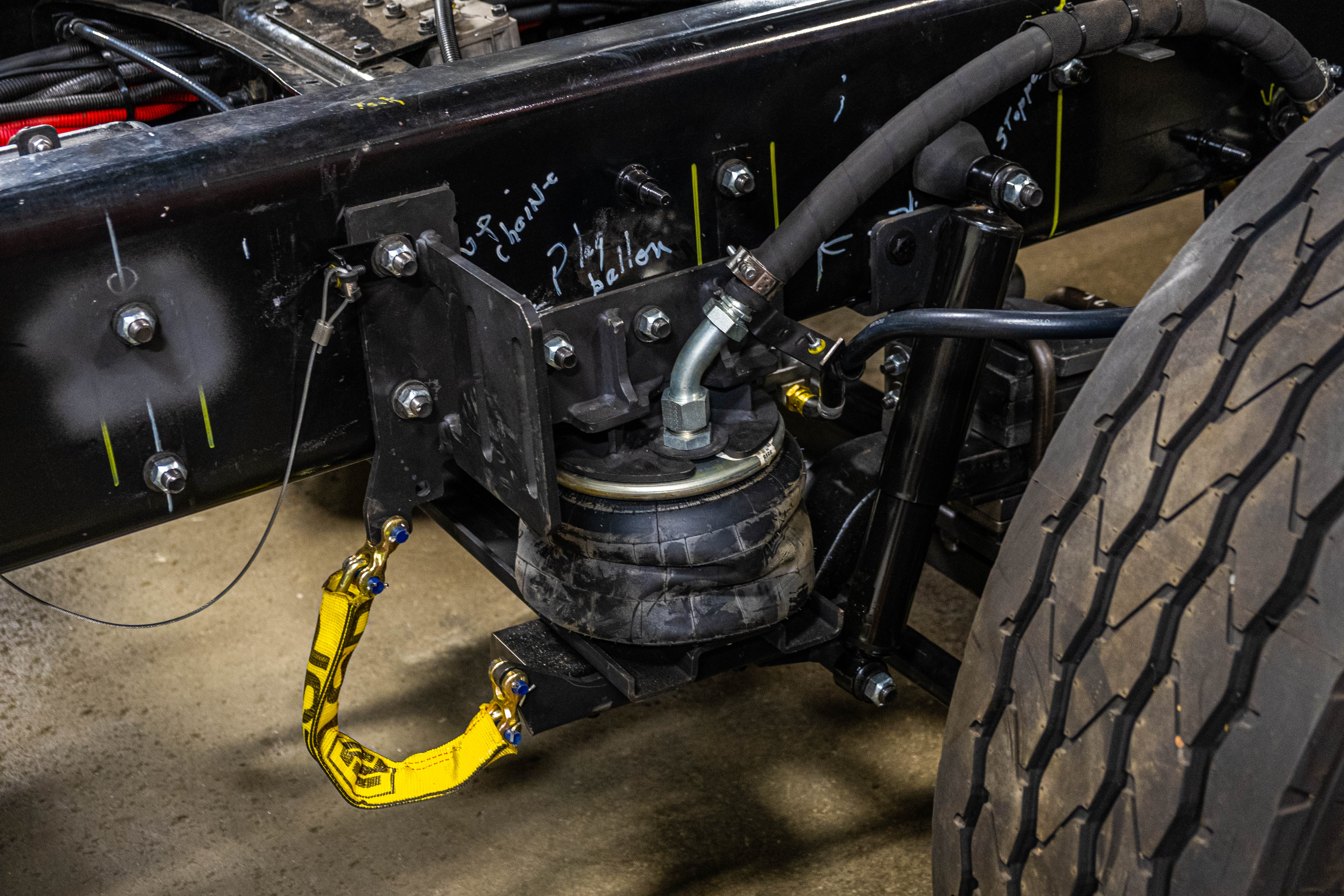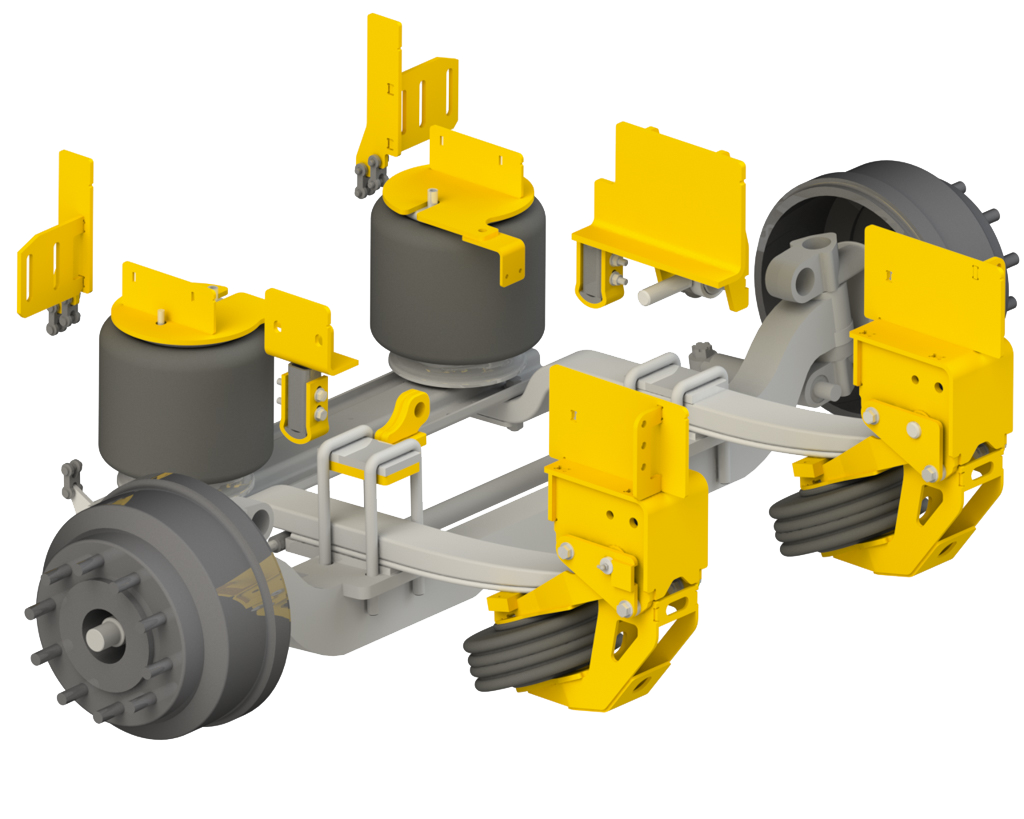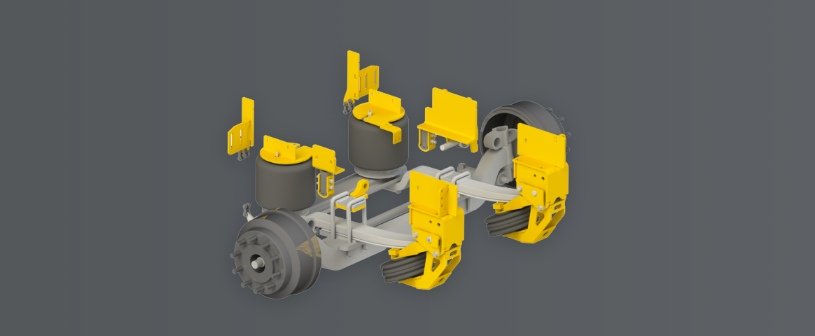Whether you just acquired a new truck or a long-time client, did you know there is a procedure in place to maintain the performance of your Simard AMS20AL3 steerable lift axle?
To help prevent premature wear, our experts will explain how to properly adjust air springs pressure.

Air springs pressure adjustment procedures
It goes without saying that the air springs pressure will determine the steerable lift axle load capacity. Therefore, it is important to complete the pressure adjustment in the usual conditions of use, thus with the vehicle at full legal capacity. Keeping in mind that axles’ positioning will vary from one truck to the other, this process will help find your truck’s ideal pressure, ultimately revealing the optimal weight distribution.
The process goes as follows:
1. Adjust the air springs pressure for the AMS20AL3 suspension between 35 and 40psi.

2. As mentioned above, load the truck according to its usual conditions of use (same payload capacity and same loading equipment). Note that it is also important to bring the truck to a gross weight of 31 000kg for the Quebec province.
3. Bring the front axle alone on a scale and note the indicated load (load A).

4. Add the lift axle on the scale and note the cumulative load of both axles (load B).

5. Calculate the lift axle load (load C) by subtracting A from B.
B – A = C

6. Compare the load of A to the one of C:
a) If A and C are close (less than 500kg from one another), go to the next step.
b) If the difference is more than 500kg, adjust the pressure and go back to step 3.
- Adjust the pressure up if C is greater than A.
- Adjust the pressure down if C is smaller than A.
7. Note the pressure adjustment giving the optimal load distribution (inscribe this information in the AMS20AL3 user manual). This information could be useful for future adjustments and alignments.

AMS20AL3 Steerable lift axle
This procedure is essential to ensure the lift axle performance and durability (AMS20AL3 suspension), otherwise premature wear on different components could happen when the pressure is too high or too low.
Air springs pressure is too low
In the case where the air springs pressure is too low, we could see:
- Premature wear of the tires
- Wheels are partially or completely stopping on the 2nd axle when braking, leading to a distortion or a flattening on certain tire areas.
- Overuse and premature wear of the 1st steerable axle due to poor load distribution.
Air springs pressure is too high
- Premature wear on the truck pivoting axis, commonly called kingpin.
- Premature wear of the tires.
- An over dominance of the 2nd steerable axle which would happen to a major part of the truck load capacity.
As you can see, the optimal setting of your suspension has a significant impact on the useful life of certain components and on security.
For more information, do not hesitate to contact our after-sales service at [email protected]
AMS20AL3
Want to learn more about the Simard AMS20AL3 steerable lift axle and see what it can do for you? Click on the following link.
Discover the AMS20AL3






